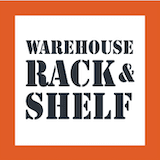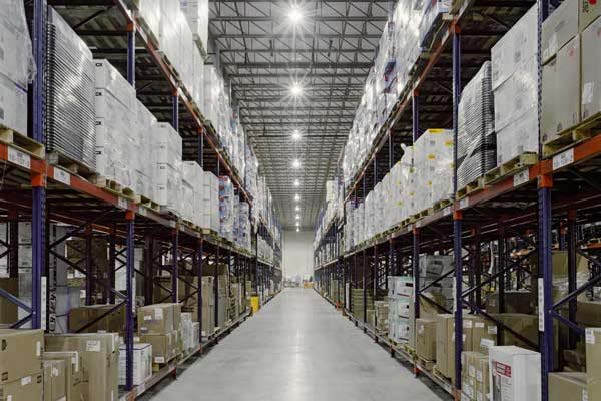Aisle Space Requirements for Pallet Rack
There are some rules of thumb that I use to estimate warehouse aisle spacing requirements for pallet rack sizes and their distance from the wall. Pallet rack spacing requirements for forklifts vary based on the size of the forklift you use to service the racks. On average a large sit-down forklift requires a 12′ aisle … Continue reading Aisle Space Requirements for Pallet Rack
Driver Access Cages Help Secure Your Warehouse
Now available to ship within ONE WEEK! Our extremely popular Driver Access Cages with emergency exit doors will be in stock and ready to ship within one week. Based on your feedback, The factory will begin stocking 3′-0″ x 7′-0″ hinge doors with full-width push bars beginning November 17, 2014! Drive Access Cages are extremely … Continue reading Driver Access Cages Help Secure Your Warehouse
Port Congestion and Labor Strife Increasing Lead Times and Causing Shortages
Ports of Los Angeles, Long Beach congestion worsens, labor talks escalate – Truck drivers wait for the California United Terminal to open at the Port of Long Beach. Some companies say they are waiting hours to receive cargo. File photo By Karen Robes Meeks, LA Daily News POSTED: 11/08/14, 1:30 PM PST | As he … Continue reading Port Congestion and Labor Strife Increasing Lead Times and Causing Shortages
LTL Freight Rate Hike for Pallet Racking
To Our Valued Customers: We are sending this ALERT to all of our customers on a major change in the shipping rates and classification on all pallet rack LTL (Less-Than-Load) shipments. Regardless who the manufacturer is – this change will affect everyone. This change did not affect full truckload rates as they are priced today. … Continue reading LTL Freight Rate Hike for Pallet Racking
What Makes Our Wire Containers Better Than the Competition?
We start with heavy gauge wire and high tinsel strength steel. Our wire goes through a straightening and forming process and then it’s welded in a highly automated welding process which insures precision welds at all intersecting points. We’re the only wire basket factory in the world that manufactures with robotic welders. Robotic welders build … Continue reading What Makes Our Wire Containers Better Than the Competition?
Used HK4000 Stacker System For Sale
I just received a call from Kip in Nebraska that he has a used HK4000 stack system for sale. I am not interested in buying it but I thought I would pass the word around. He tells me it is a late 90’s model that had its electric upgraded in 2009. He says it sold … Continue reading Used HK4000 Stacker System For Sale
HK Systems Automated Guided Vehicles
Is this the future of warehousing? Driverless forklifts are being introduced in some of the nation’s largest warehouses. HK systems seems to be at the forefront of manufacturing these automated guided vehicles (AGV’s) and stacker systems. This doesn’t bode well for forklift drivers in the future. Drivers of forklifts and over the road trucks seem … Continue reading HK Systems Automated Guided Vehicles
JIT = Just In Time Manufacturing
Just in time (JIT) is a production strategy that strives to improve a business’s return on investment by reducing in-process inventory and associated carrying costs. The philosophy originated in Japan in the 1950’s and was first adopted by Toyota. Often JIT has factories relying on suppliers to ship smaller quantities of inventory more often. The … Continue reading JIT = Just In Time Manufacturing
Lean Manufacturing Principles Saves Money & Eliminates Waste
Lean Manufacturing is a systematic method of trying to eliminate waste in the manufacturing process. It was originated in the Japanese manufacturing industry, specifically the Toyota Production System. The idea is to identify and steadily eliminate waste by redesigning work cells and improving the flow of work through the production process. The goal is cost … Continue reading Lean Manufacturing Principles Saves Money & Eliminates Waste
What is the difference between a Tier 1 and Tier 2 supplier?
Tier 1 & Tier 2 suppliers refer primarily to suppliers of the automotive industry. A Tier 1 supplier supplies products (usually parts) directly to an OEM (What is an OEM?). The difference, then, is that a Tier 2 supplier supplies products to a Tier 1 supplier (who then supplies the parts to an OEM). In … Continue reading What is the difference between a Tier 1 and Tier 2 supplier?

